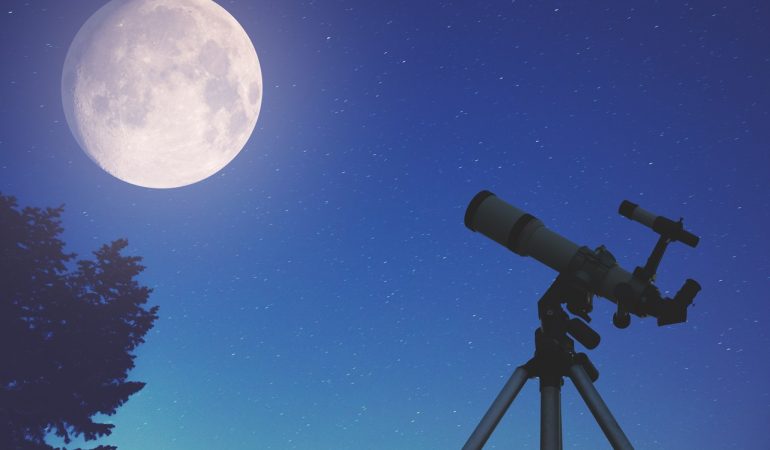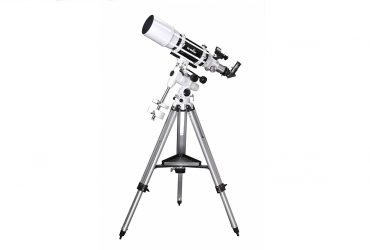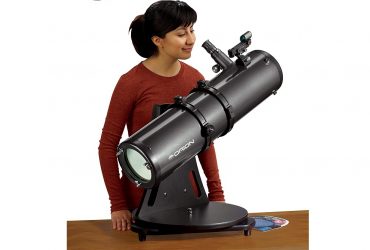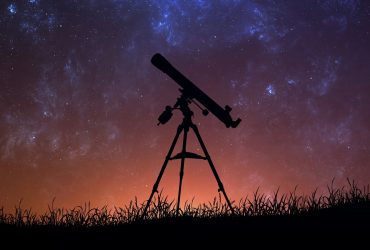Why Are Telescopes So Expensive?
Like most hobbies, astronomy can get quite expensive as you get deeper into it. Good telescopes are not cheap, and there’s also the cost of eyepieces, barlow lenses and other accessories.
In this post, we discuss why good telescopes are so expensive and whether the upgrade is worth it.
We also have some tips on how you can get started in astronomy and astrophotography without breaking the bank.
How Much Does A Telescope Cost?
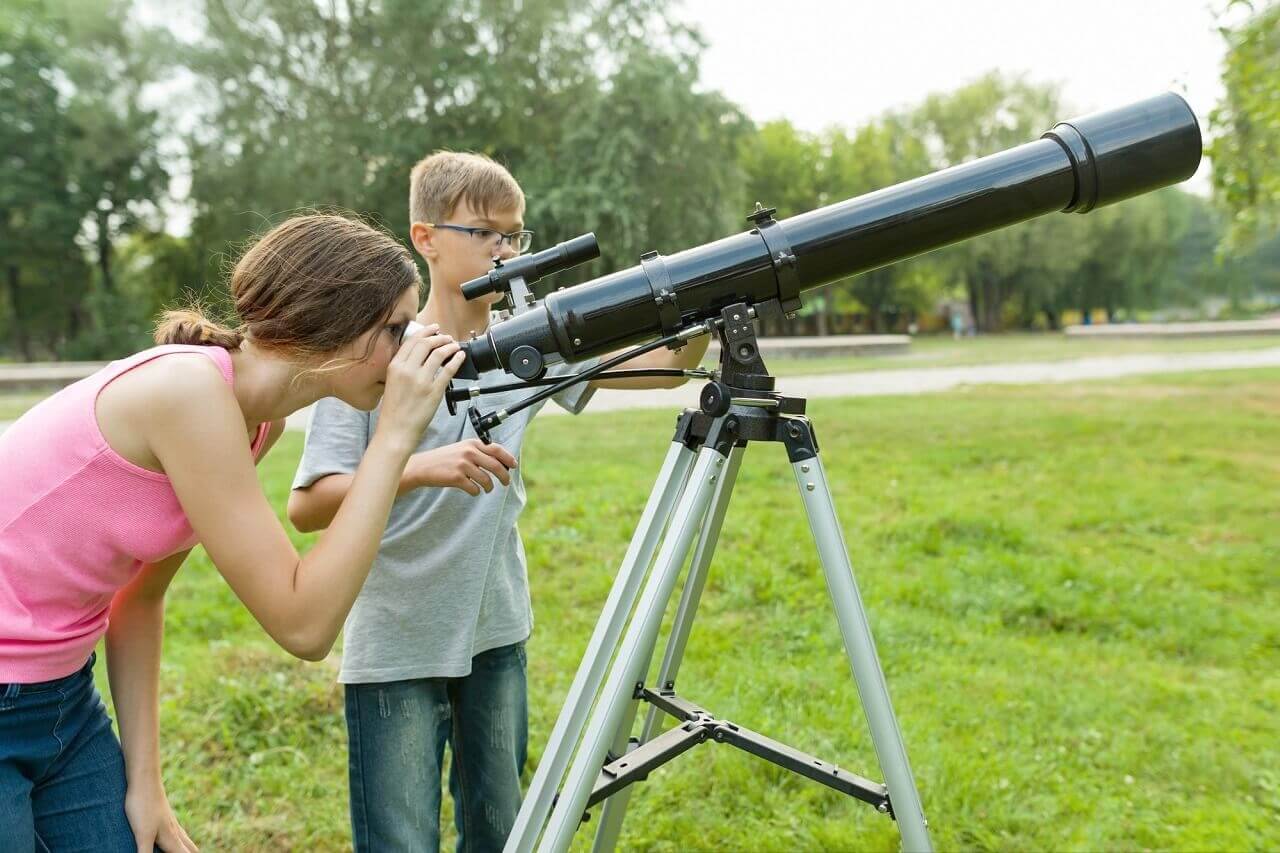
While good telescopes are pricey, you don’t need to spend a lot of money to start observing the night sky. Telescopes range all the way from less than £100 to thousands of pounds.
But hobbyist telescopes rarely go above £1000, with only a few models like the Celestron NexStar 8SE computerised telescope breaching this figure.
Don’t expect to find a great telescope for less than £100. At this price point, you’ll mostly find beginner 70mm (2.7 inch) telescopes designed for kids.
Sure, you can see the moon, planets and even galaxies. But the small aperture really limits image quality. You also won’t be able to make out detailed features of various objects in the sky.
Between £200 and £500 is where you’ll find some good telescopes that provide a great starting point for astronomy. These are typically 3 and 4 inch aperture telescopes that are good for close observations as well as stargazing.
At over £500, you can get an advanced telescope that offers excellent views of the night sky. These include large (4-8 inch) reflectors as well as powerful refractor and compound telescopes.
As you can see, even a good beginner telescope is not cheap. You need to spend at least £200 and that doesn’t include the cost of additional eyepieces that you’ll need (most telescopes come with just 1 or 2 eyepieces).
Why Are Telescopes So Expensive?
So why are telescopes so darn expensive? Why can’t they be as cheap as binoculars?
The biggest reason why telescopes are so expensive is the optics – these are the lenses and mirrors inside the telescope.
Gathering light from objects that are light years away from earth is no mean feat. A telescope has to be able to capture objects that are millions of kilometres away.
To do this, it needs highly specialised optics. These are designed and constructed very carefully and with incredible precision to provide the best image quality with minimal distortions.
Lenses are especially difficult and expensive to produce, which is why large telescopes are usually reflectors (mirrors are cheaper to make).
Lenses require a special kind of highly pure glass called optical glass. High-end refractors contain even more specialised lenses that are made from extra-low dispersion or ED glass that reduces chromatic aberration.
Mirrors, on the other hand, need to be hand polished for a smooth finish. They are labour intensive to manufacture.
Both mirrors and lenses also need special coatings. Here’s a video showing the many steps involved in making telescope mirrors.
Most of the other components of a telescope are relatively straightforward to produce. It’s the mirrors and lenses that make telescopes expensive. They are time consuming, expensive and labour-intensive to produce.
The bigger the optics, the more expensive the telescope gets. A large 6” or 8” refractor telescope could easily cost over a thousand pounds.
Large reflectors are also pricey, though cheaper than refractors.
High-end telescopes may also have advanced optics with additional coatings that produce an even better image quality.
Other Reasons Why Telescopes Are Expensive
In addition to the type and size of the mirrors and lenses used, there are other factors that affect the price of a telescope.
One of the biggest is the type of mount the telescope comes with. A telescope with a simple altazimuth mount will cost less compared to a similar telescope that comes with an equatorial mount.
Computerised mounts on GoTo telescopes are even more expensive.
Other factors include:
- The size and number of eyepieces included.
- Additional accessories such as an instrument tray, red dot finder, smartphone holder and others.
- The quality of materials used to make the telescope. For instance, a telescope with a carbon fibre tube is going to be more expensive compared to one with a plastic or aluminium tube.
How To Get Started With Astronomy On A Budget
Is there hope for those of us who want to enjoy backyard astronomy on a shoestring budget?
Of course there is. Amateur astronomy has gotten really popular in recent years, so manufacturers have introduced cheaper but still decent telescopes.
Some of these are designed mostly for kids, though they are also great for anyone looking for a cheap telescope that costs under £100.
Between £100 and £200, you can get some really good beginner telescopes with a 70mm (2.7”) aperture. Pair them with the right eyepieces and you’ll get some pretty decent views of the moon, plants and galaxies.
If that price range is still a bit too high for your liking, a pair of binoculars is a great way to get started with astronomy. They can be just as good as a basic telescope, for a lot less money.
We recommend getting a tripod to mount the binoculars on as you’ll need to keep them perfectly still to be able to observe objects, especially distant ones like stars.
Another option is to visit an observatory near you. Some observatories allow visitors to use their powerful telescopes.
If that’s not an option, look for astronomy groups in your area. One of them may have a shared telescope that you can use. You may also get a friend to borrow a telescope from.
Keep in mind that astronomy is not just about looking through a telescope. As you wait to buy a good telescope, check out the night sky with your naked eyes. Learn constellations and know how to spot major stars and planets.
You can also learn a lot from sky maps and charts.
What Can I See With A Cheap Telescope?
Don’t feel bad if you have to start with a cheap telescope. It’s not as useless as you might think. You can still see plenty of things with a sub £200 telescope.
A cheap 70mm aperture telescope, even one made for kids, can capture the moon, planets and even stars.
What you lose out on with low cost telescopes is resolution. Most of the objects in the sky will appear as bright pinpoints of light.
It can be hard to tell whether you are really looking at Saturn or Mars. That’s because it’s difficult to see features like the rings of Saturn or the red spot on Jupiter.
The moon, being much closer to Earth, will be easy to observe with a cheap telescope, or a pair of binoculars.
You can see the rough pockmarked surface of the moon, but you can’t zoom in too far with a high power eyepiece without losing image quality.
A cheap telescope can also see stars. You’ll see a lot more stars than your naked eyes show you. But they may appear a bit blurry or fuzzy especially around the edges of the image.
If you want to see sharper images or you want to zoom in close to Jupiter or the moon, we recommend spending at least £300 on a telescope.
But a cheap telescope is a great place to start. You’ll learn how to locate objects in the sky, how to read and apply sky maps and charts, and how to use the various functions of a telescope like align and zoom.
Is An Expensive Telescope Worth It?
It really depends on what your goals are. Some people are happy with what they observe through a £200 or £300 telescope.
But if you want to take your astronomy hobby to the next level, consider upgrading to a more expensive telescope.
So what does a few extra hundred pounds get you? Here are the main advantages of getting a premium telescope.
- Sharper and better image quality. Expensive telescopes typically have larger apertures that capture more light and deliver higher resolution images. You’ll be able to see the moon, planets and other objects in more detail.
- You can zoom in without losing out on image quality. A larger aperture lets you use a more powerful eyepiece without distorting the image too much. You can get a closer look at the craters on the moon or individual stars in a binary star system.
- Premium telescopes use higher quality optics with special types of glass or coatings. This not only improves image sharpness/resolution, it also reduces blurriness, aberration and other distortions.
Which Are The Most Expensive Telescope Brands?
Meade, Vixen Optics, Tele Vue and APM LZOS are some of the most expensive telescope brands in the world. Their telescopes typically cost thousands of pounds.
But they also sell some of the best and most powerful telescopes, making them great if you want to upgrade your astronomy gear.
You can get some huge reflectors (12in or bigger) and high-end refractors with special optics like ED glass or APO lenses.
Which Are The Most Affordable Telescope Brands?
On the other end of the scale we have popular consumer brands like Celestron, Svbony, Orion and Skywatcher.
These brands sell budget and mid-range telescopes that are great for kids, beginners and casual astronomers.
